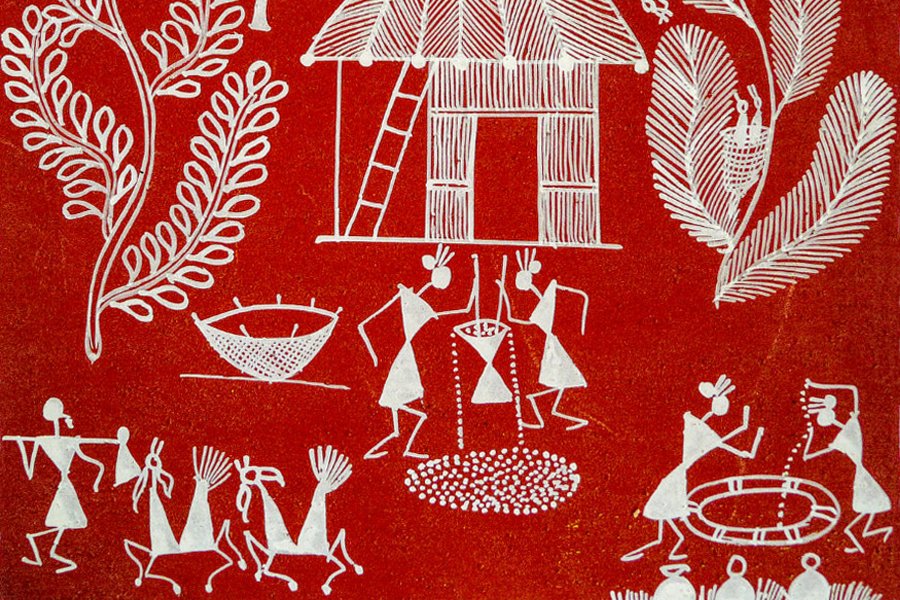
India: The Craftsmanship Capital of the World
The Legacy of Indian Craftsmanship

Historically, Indian craftsmanship has been deeply intertwined with trade. Goods like textiles, jewelry, and intricate carvings were highly sought after along the Silk Road and maritime routes. Today, Indian craftsmanship continues to captivate foreign tourists, who are drawn to the unique blend of traditional techniques and modern sensibilities.
During the Vedic Age, craftsmanship flourished even further. Textiles, especially woven fabrics, became prominent, meeting both utility and aesthetic needs. This era saw the rise of decorative arts, including pottery adorned with geometric and floral designs.
The Mauryan period marked significant advancements in sculpture and jewelry making. Under the patronage of emperors like Ashoka, artisans created monumental sculptures and intricate stone carvings, often depicting Buddhist themes. The use of precious metals in jewelry became widespread, reflecting both religious significance and royal symbolism.
The Gupta era is often regarded as a golden age of art and culture. Craftsmen excelled in stone carving, weaving, woodcarving, and jewelry-making. Temples from this period showcase intricate carvings that tell stories from mythology and daily life, demonstrating a mastery of techniques and the introduction of new materials.
A Global Marketplace
In the vibrant world of handicrafts, India is not alone. Other countries like China, Indonesia, Vietnam, Thailand, Italy, Mexico, and Morocco also dominate this sector, each bringing their own unique artistry and traditions to the global stage.
However, Indian handicrafts stand out in this diverse landscape, and here’s why:
Craftsmanship Diversity

India’s craftsmanship is a rich tapestry woven from centuries of tradition and regional diversity. Each region boasts its unique art forms, showcasing a variety of artistic expressions influenced by local customs. Here are some prominent techniques and crafts:
Metal Crafts:
- Dhokra Art: An ancient technique of non-ferrous metal casting using the lost-wax method.
- Bidriware: Originating from Bidar, this craft uses a blackened alloy of zinc and copper inlaid with silver.
Textile Techniques:
- Weaving: Assam is famous for its silk weaving, particularly using muga silk.
- Embroidery: Kantha from West Bengal and Chikankari from Lucknow showcase intricate needlework.
Pottery:
- Blue Pottery: Characterized by its vibrant blue color, originating from Jaipur.
- Khurja Pottery: Known for its colorful designs with a history linked to Mughal soldiers.
Wood Crafts:
- Wood Carving: Artisans create intricate designs inspired by nature or cultural motifs.
- Toys from Soft Wood: In Andhra Pradesh, traditional methods are used to carve toys from soft wood.
Stone Carving:
Artisans create everything from temple sculptures to decorative items, employing techniques that vary by region.-
Bamboo and Cane Crafts:
Particularly prevalent in northeastern states, these crafts produce furniture, mats, and decorative items. -
Tribal Crafts:
Encompassing techniques like basket weaving and tribal jewelry making, these crafts reflect the cultural practices of tribal communities.
If you’re a homebody and a handicraft enthusiast, check out Vaarsa London’s latest handcrafted home decor, including brassware from Moradabad, the brass capital of India, handwoven bags and trays from West Bengal, solid teak wood boards and coasters from Nagaland and high quality textiles from Rajasthan.
Government Support for Artisans:
The Indian government has implemented various plans and initiatives to support the handicrafts industry such as: Geographical Indications (GI) tag to promote unique regional crafts and improve market visibility.
PMEGP (Prime Minister's Employment Generation Programme) provides financial assistance to artisans for setting up their enterprises. National Handicrafts Development Programme (NHDP) focuses on training artisans to enhance skills and adopt modern techniques.
Export Promotion Council for Handicrafts (EPCH) aims to boost exports by participating in international fairs and exhibitions.
These efforts collectively aim to enhance the livelihoods of artisans, preserve traditional crafts, and promote Indian handicrafts globally.
Modern Meets Traditional
Indian crafts are increasingly blending traditional artistry with contemporary design sensibilities, appealing to both domestic and global markets. Here are several ways traditional crafts are evolving:-
Design Innovation: Elevated utility items, like brass masala dabbas and roti boxes, are being redesigned with modern flair, seamlessly merging utility with aesthetics. Designers such as Shabnam Gupta have been at the forefront of this movement, revamping classic pieces with minimalistic yet functional designs that appeal to today’s tastes.
-
Functional Decor: Many traditional crafts are reimagined as multifunctional decor items. Products like intricately woven baskets and wooden jharokhas have been reinvented to serve as both functional objects and statement pieces in homes. FabIndia, for instance, blends traditional Indian craft techniques with modern aesthetics to create functional, eco-friendly decor.
-
Sustainable Practices: Artisans are increasingly adopting sustainable practices by using eco-friendly materials and repurposing resources. This trend resonates with environmentally conscious consumers and aligns with brands like Ellementary, which focus on eco-friendly, handcrafted pieces that combine sustainability with style.
- Global Exposure and E-commerce:
- Platforms like Etsy provide artisans with a global marketplace, while social media enhances their visibility.
- Collaboration with Designers:
- Unique fusion products result from collaborations between traditional artisans and contemporary designers.
- Customization and Personalization:
- Bespoke crafting allows consumers to personalize products, enhancing their appeal.
The Rise in Demand for Sustainable Crafts
As global awareness of environmental issues grows, the demand for sustainable crafts has surged. Indian artisans are well-positioned to meet this demand due to their connection to natural materials and traditional techniques.- Natural Materials: Artisans use locally sourced, biodegradable materials, minimizing environmental impact.
- Low Carbon Footprint: Artisanal practices often involve localized production, contrasting sharply with mass-produced goods.
Have you ever experienced Indian handicrafts, whether through a visit or through personal use? We’d love to hear your thoughts in the comments below!